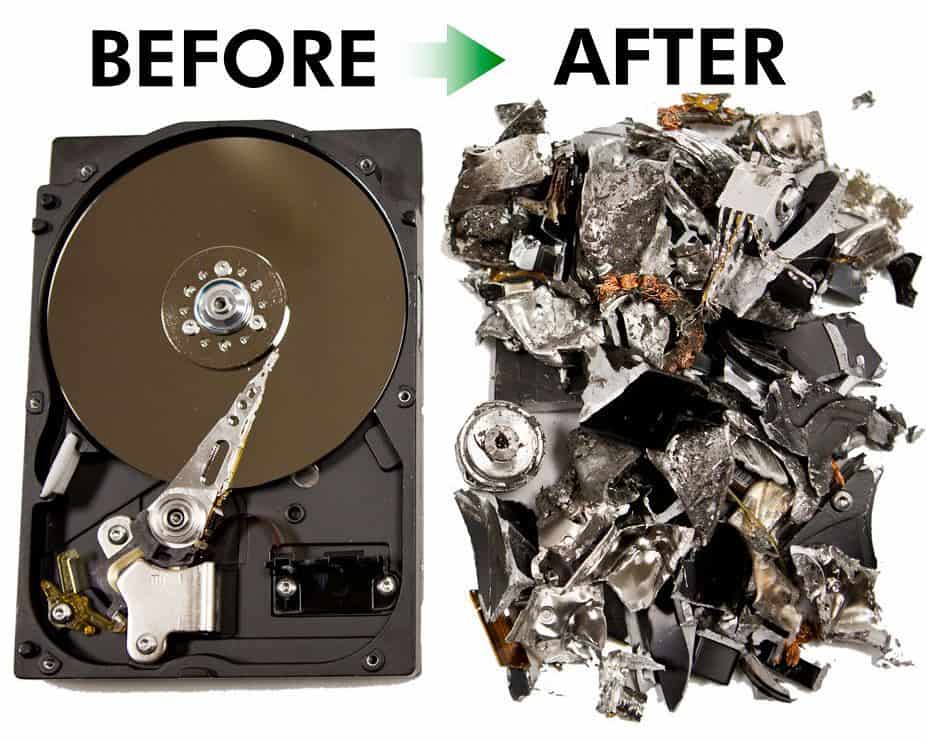Ideal Practices for Data Destruction to Strengthen Your Cyber Security Structure
Ideal Practices for Data Destruction to Strengthen Your Cyber Security Structure
Blog Article
The Significance of Effective Data Damage Practices in Shielding Sensitive Details and Ensuring Computer Security
In an age where data violations are progressively common, the relevance of efficient data devastation methods can not be overemphasized. Carrying out robust information damage methods not just reduces these threats however also lines up with legal conformity requirements, making certain that organizations promote their track record and foster client depend on.
Understanding Information Destruction
Recognizing data devastation is important in today's electronic landscape, where sensitive info can easily be jeopardized. Reliable data devastation involves not simply removing files yet ensuring that information is irretrievable through detailed methods. This process is crucial for organizations that manage personal client info, intellectual residential or commercial property, or interior records, as any breach can cause extreme financial and reputational consequences.
Data damage incorporates numerous techniques, including shredding physical media, degaussing magnetic storage gadgets, and using software-based solutions that overwrite data multiple times. Each technique serves a particular function and needs to line up with the level of sensitivity of the details being disposed of. For example, physical damage is commonly favored for hard disks having very personal data, while software application approaches could be enough for much less sensitive details.
In addition, sticking to industry standards and regulations, such as the General Data Security Regulation (GDPR) or the Health Insurance Policy Mobility and Responsibility Act (HIPAA), is crucial for conformity and to mitigate legal risks. Organizations needs to create a robust information destruction plan, train workers on best methods, and on a regular basis investigate their treatments to ensure that all sensitive details is gotten rid of firmly and successfully.
Threats of Inadequate Practices
Inadequate data destruction practices subject companies to considerable risks that can have significant repercussions. When delicate info is not appropriately disposed of, it remains prone to unauthorized gain access to, which can lead to information violations and identification theft. Such occurrences not only compromise the security of individuals but also taint the company's online reputation, resulting in a loss of customer trust fund and prospective economic repercussions.
In addition, governing compliance is increasingly rigorous in numerous industries. Failure to abide by information damage laws can lead to substantial fines and lawsuits versus organizations. These charges can divert and stress financial resources focus from core service procedures.
Furthermore, the abuse of residual data can result in copyright burglary or corporate espionage, endangering affordable advantages (data destruction). The influence of insufficient information destruction extends beyond prompt financial losses; it can also cause long-term damage to brand name integrity and market setting

Organizations need to acknowledge that information safety and security is not solely regarding avoiding breaches; it likewise incorporates the accountable management of information throughout its lifecycle. Neglecting effective data damage methods can have disastrous ramifications, highlighting the need for robust actions to reduce these risks.
Finest Practices for Information Destruction
Executing reliable data devastation techniques is essential for securing sensitive details and keeping compliance with regulatory criteria. Organizations should embrace a multi-faceted strategy to make sure that information is irretrievable, therefore protecting against unauthorized accessibility and additional info possible breaches.
First, data ought to be categorized based on sensitivity, enabling organizations to apply suitable destruction approaches tailored to the level of danger. For electronic information, utilizing software-based data-wiping tools that follow market standards can successfully overwrite existing data. Physical destruction methods, such as shredding or degaussing, are critical for gadgets that store delicate info, making sure total removal.
Developing a clear information retention policy is important, outlining the length of time different kinds of information must be retained prior to destruction. Routine audits of information storage space systems are additionally needed to determine unnecessary or outdated information needing removal.
Moreover, training staff members on the relevance of information damage and the details protocols to follow fosters a culture of safety and security within the organization. Keeping documents of information destruction refines offers liability and sustains compliance with external laws and interior plans. By adhering to these ideal techniques, companies can significantly reduce the risks connected with data direct exposure.
Legal and Conformity Factors To Consider

Failure to abide by these laws can cause serious charges, consisting of considerable fines and reputational damage. Organizations needs to apply a durable data devastation policy that lines up with these legal frameworks and supplies clear guidelines on the appropriate methods of information disposal, whether physical shredding or digital cleaning.
In addition, preserving documents of data destruction tasks is important for showing compliance during audits or evaluations. By focusing on legal and compliance factors to consider, companies can enhance their information protection pose and foster trust with clients and stakeholders, inevitably adding to a more protected information monitoring environment.
Benefits of Effective Data Devastation
Reliable data damage practices extend past simple compliance; they use considerable advantages to organizations that prioritize them. By making sure that delicate info is irretrievably damaged, organizations reduce the danger of data breaches and the prospective economic consequences related to them. This proactive strategy not just safeguards against unapproved access but additionally improves the overall trustworthiness of the organization in the eyes of stakeholders and customers.
Carrying out durable data damage methods, such as physical destruction of storage space tools or advanced information cleaning strategies, adds to the conditioning of a company's cybersecurity posture. data destruction. It reduces the likelihood of copyright theft and shields exclusive details, thus maintaining a competitive edge in the market

Verdict
Finally, efficient information damage techniques are important for protecting delicate details and boosting overall computer safety. By carrying out thorough methods such as shredding, software application, and degaussing overwriting, organizations can minimize the risks related to unauthorized gain access to and information violations. Adherence to regulative requirements, consisting of GDPR and HIPAA, additional reinforces compliance and secures versus legal effects. Inevitably, a dedication to robust data destruction methods promotes a society of over at this website obligation, thus strengthening a company's cybersecurity pose and preserving client depend on.

Report this page